Brake Pad Replacement: Rim Brakes
Brake pad replacement is a common service for rim caliper braking systems. With use, pads will simply lose material and become too thin to be effective. Additionally, pad material will also harden as it ages, becoming less effective. This article will discuss brake pad replacement on bicycle rim brake systems.
Pad Type Identification
Brake pads come in a variety of shapes and sizes, but there are three basic rim brake pad systems: Road, Threaded Stud, and Smooth Stud.
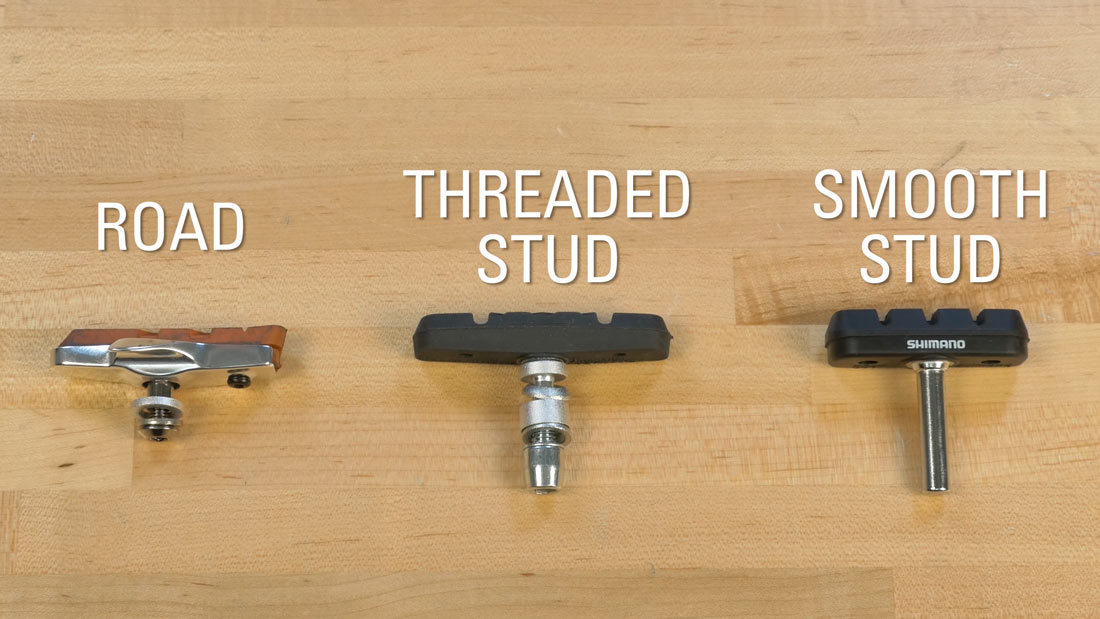
In the smooth stud system, the post extends from the pad and is pinched by a mechanism in the caliper arm. There are no threads on the post. The smooth stud pad is found largely on cantilever brakes.
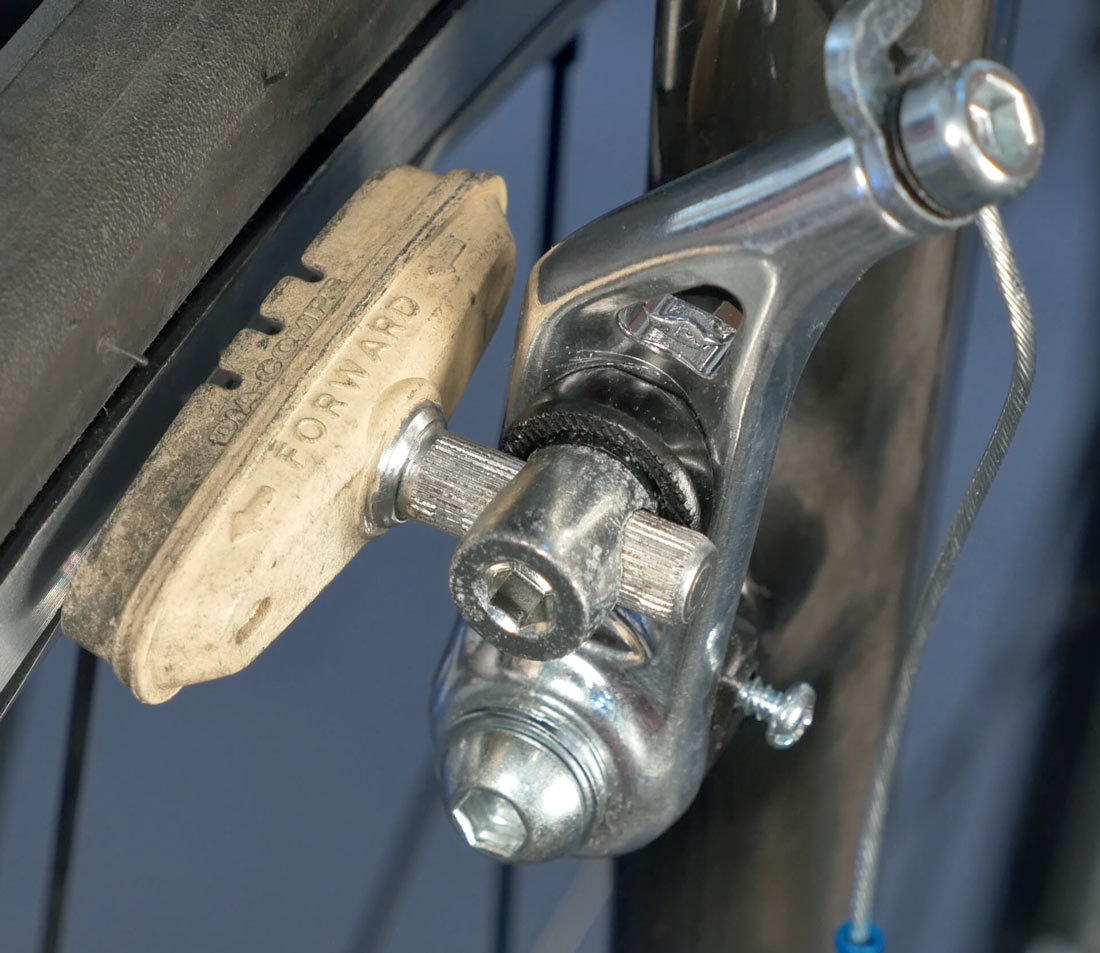
The road brake system and the threaded stud system look similar. They are both fastened to the caliper arm at the end of the stud. The best way to differentiate between road pads and threaded stud pads is that the threaded stud pads have a series of two convex and two concave spacers. A road brake pad will have a thin washer, and maybe even a spacer, but typically lack the pairing of the two convex and two concave spacers.
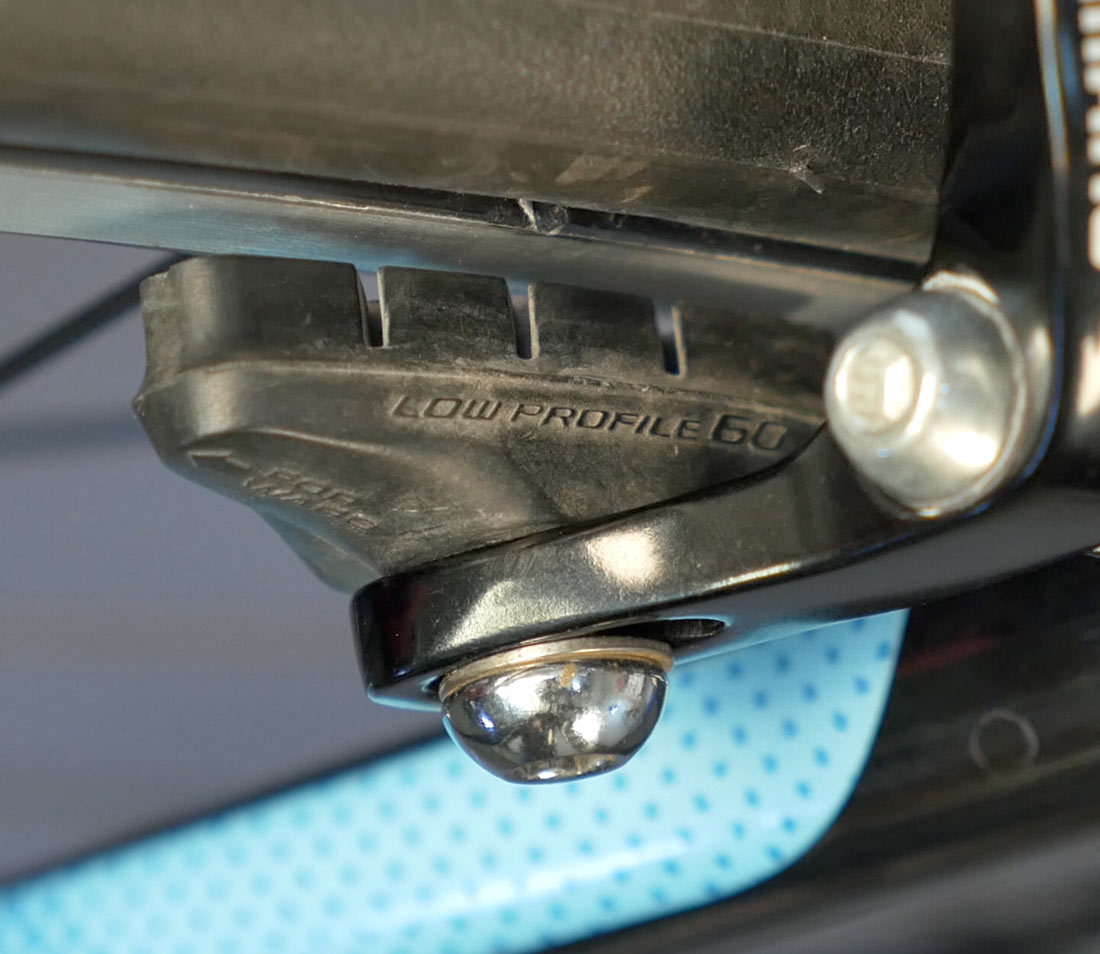
Common road brake pad
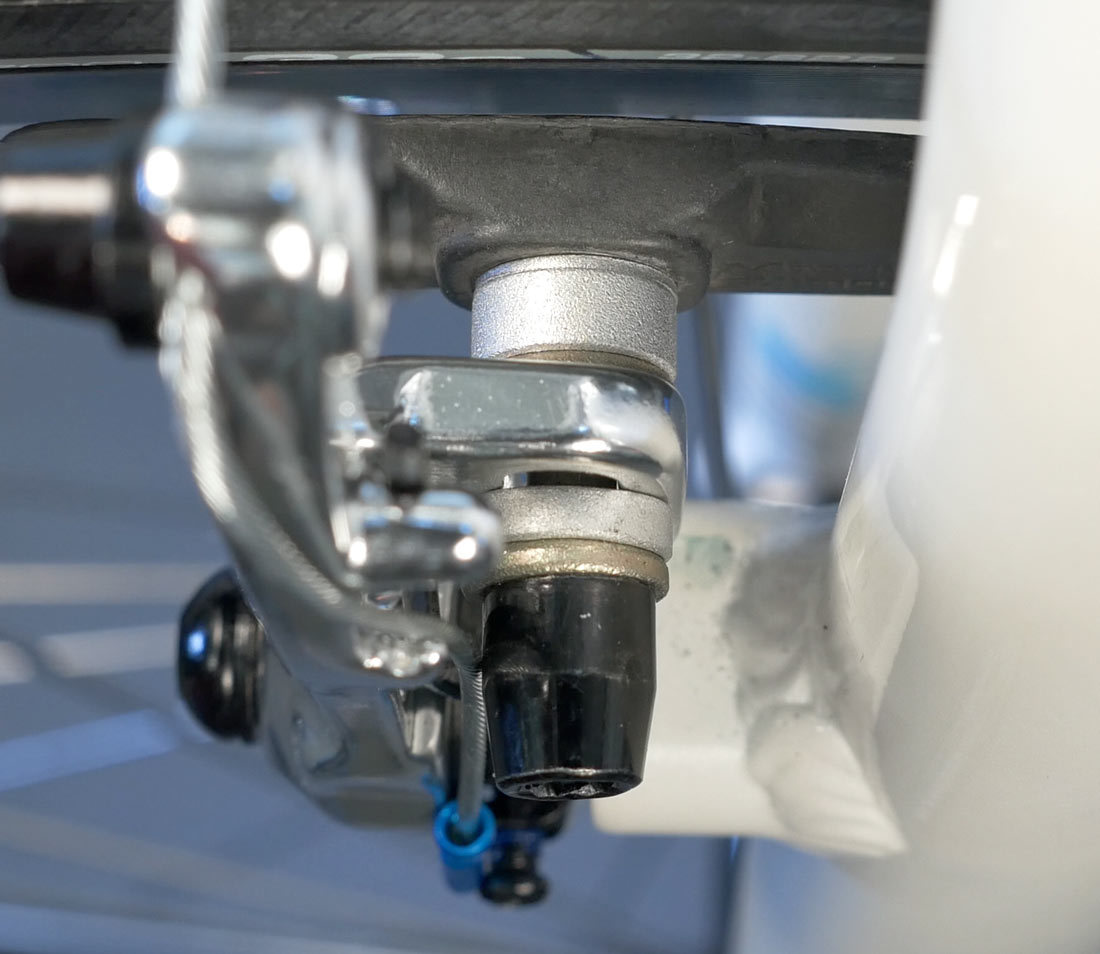
Common threaded stud pad
All three of these systems come in either a one-piece, where the pad is fixed to the stud, or a cartridge style, where the pad slides in and out.
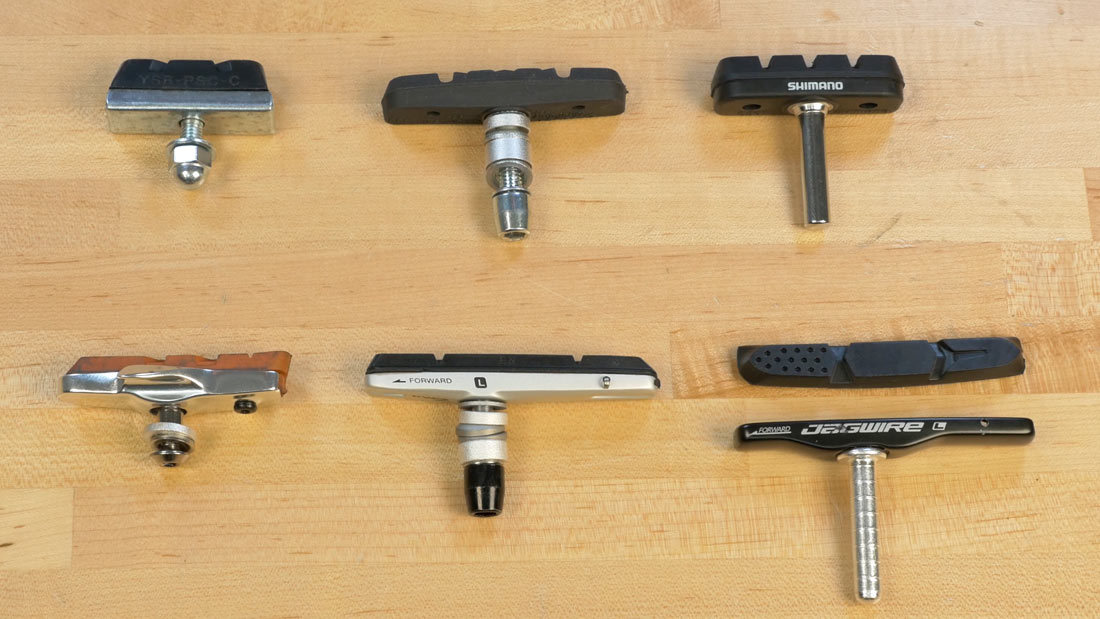
Road Brake Pad
Full Pad Unit
This process is made easier by removing the wheel. Loosen the pad fastener and remove the pad from the arm.
Inspect the new pads for any forward arrows and left and right side markings. If there is a closed side to the holder and an open side, the closed side always goes to the front. Install the pads accordingly.
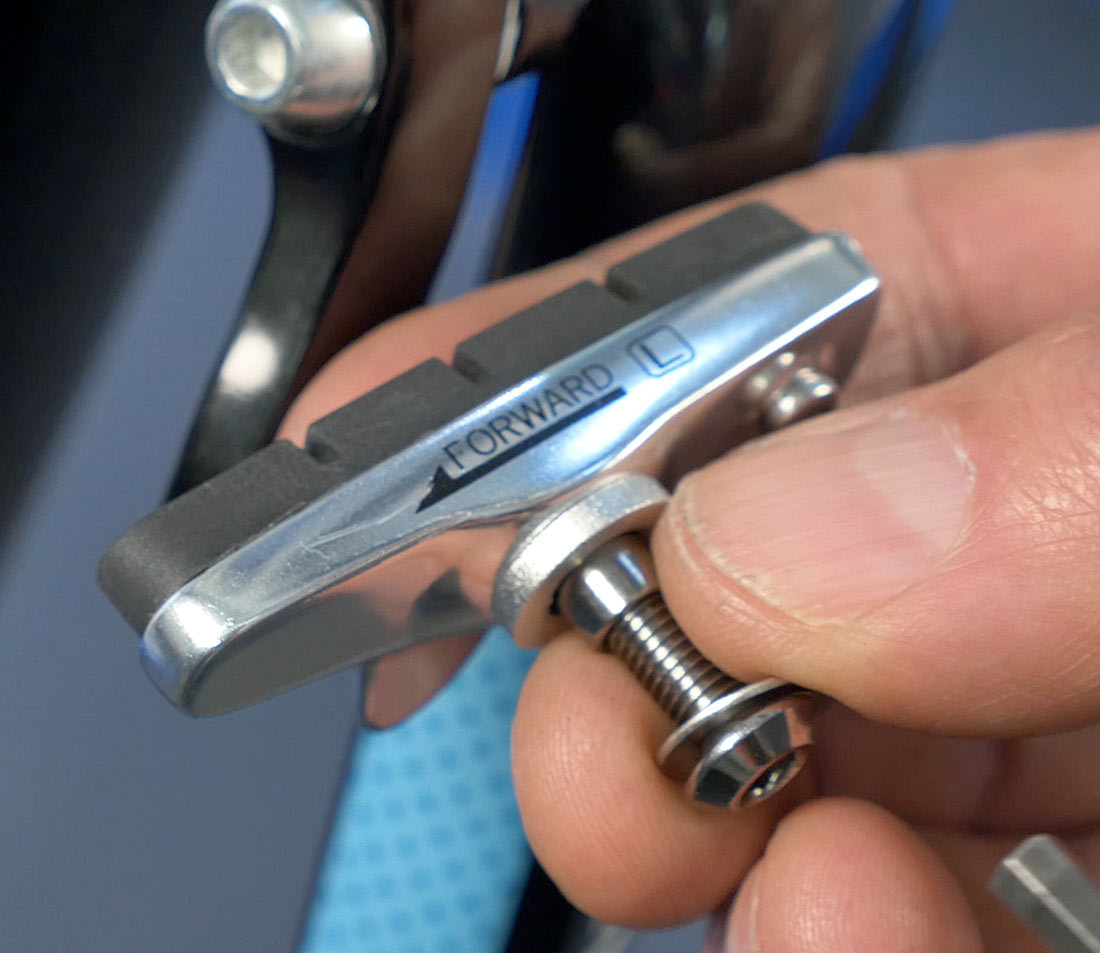
Cartridge Style Pad
If you are replacing only pad material on cartridge style pads, remove the retention screw or clip, and pull the pad backward to slide it out. Use pliers if necessary.
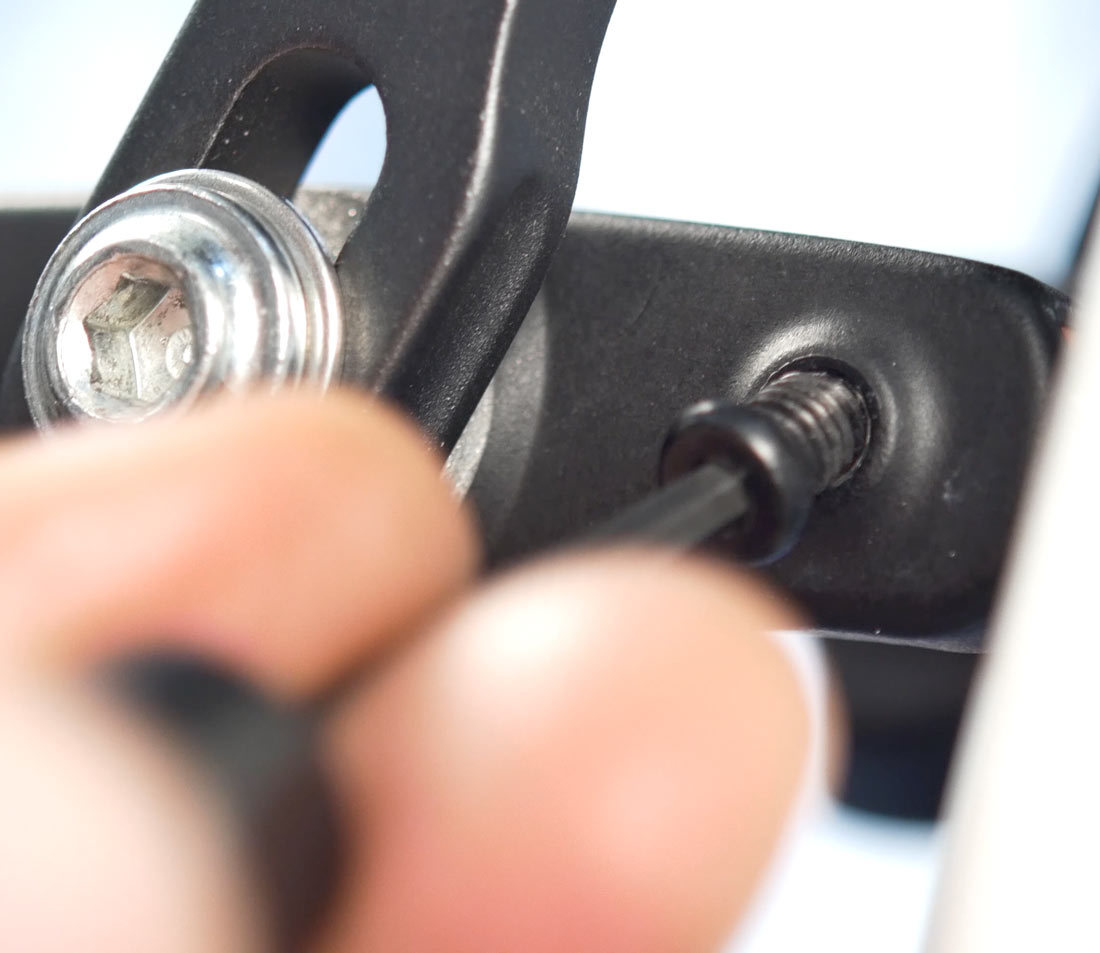
Inspect the new pads. There will be a groove in the back of the pad to accept the retention screw or clip. Push the new pad fully into place and install the retention screw or clip. Repeat the process on the other side. Adjust pad to rim.
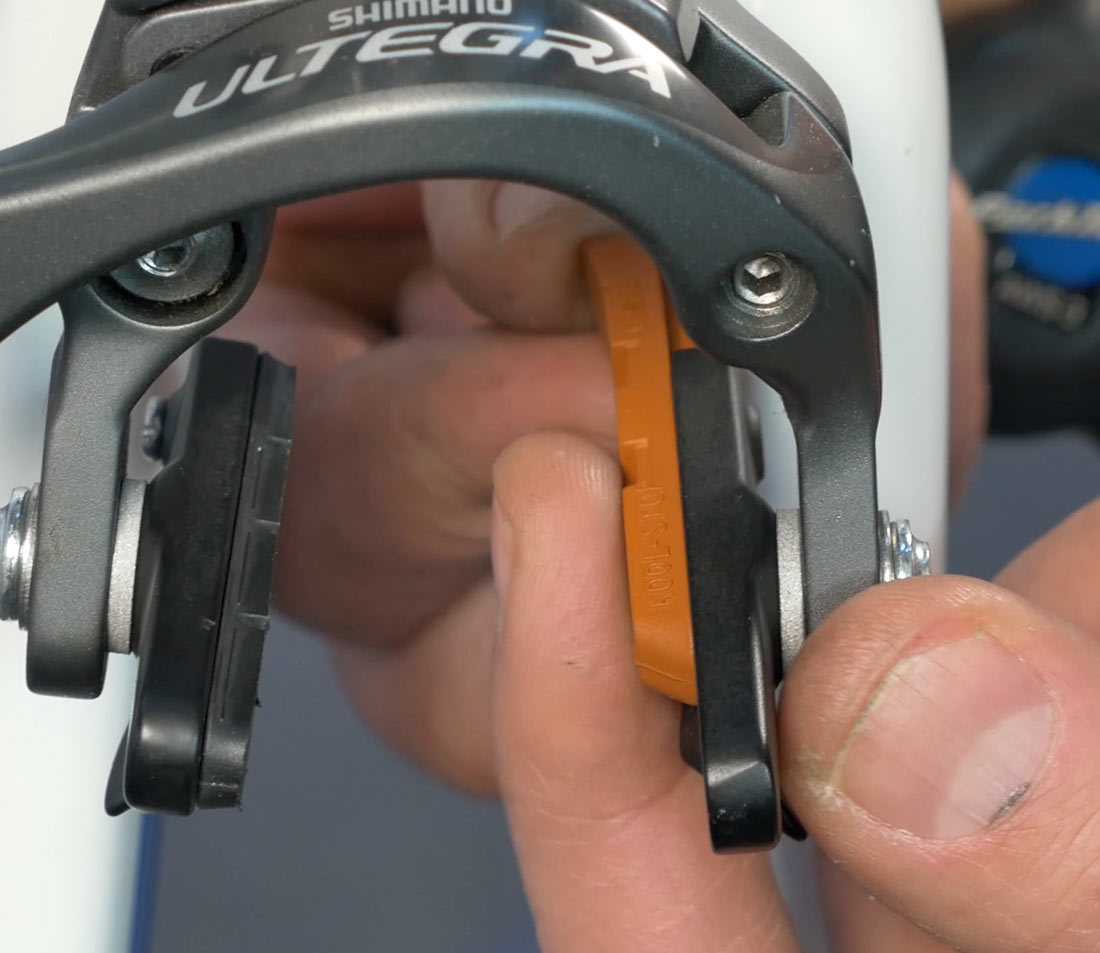
For more on brake and pad adjustment see:
Threaded Stud Pad
Full Pad Unit
Threaded stud pads use different width spacers to position the brake arm relative to the rim. Inspect the bike on one pad for a wider spacer and a narrower spacer.
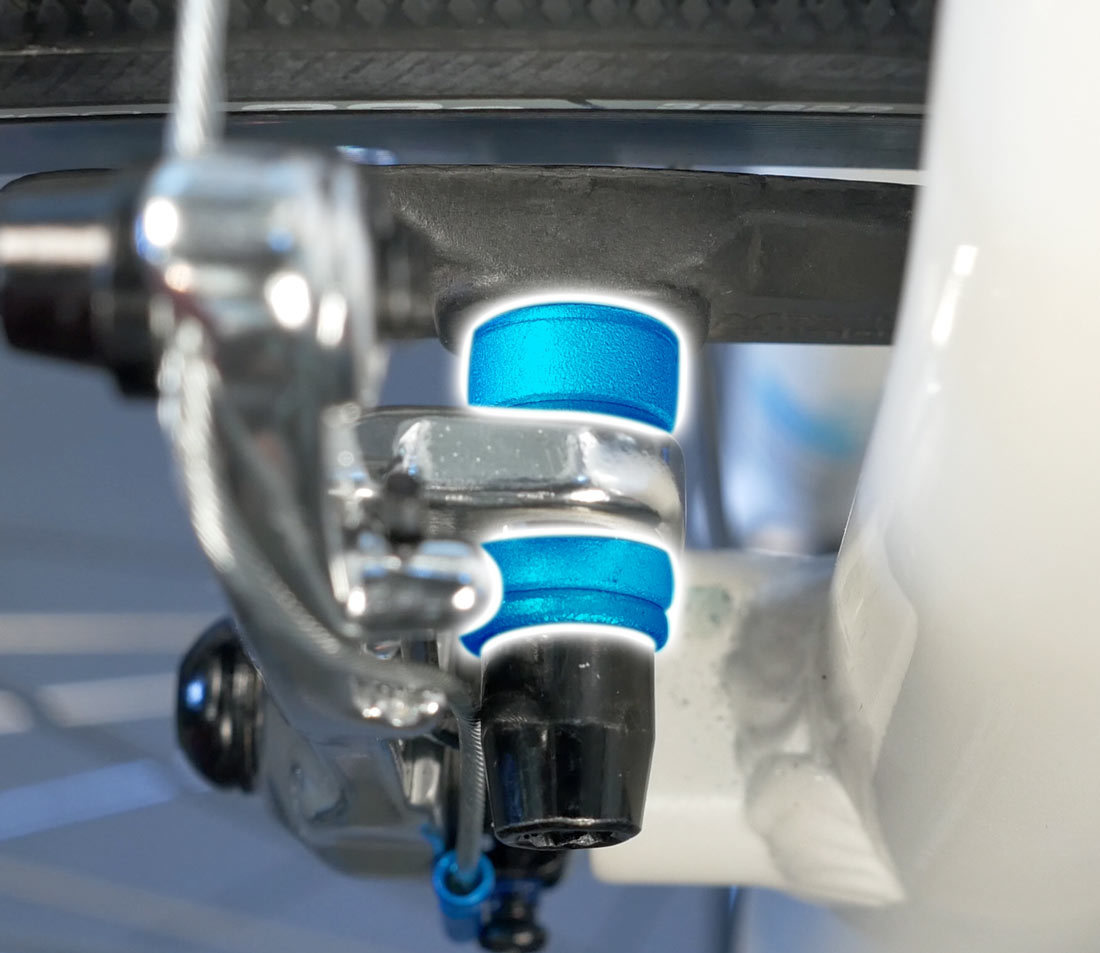
Threaded stud pads use a pair of narrow and a pair of wider spacers. These are moved inboard or swapped outboard to position the arms to the rim. Ideally, the caliper arm is close to vertical as the pad strikes the rim.
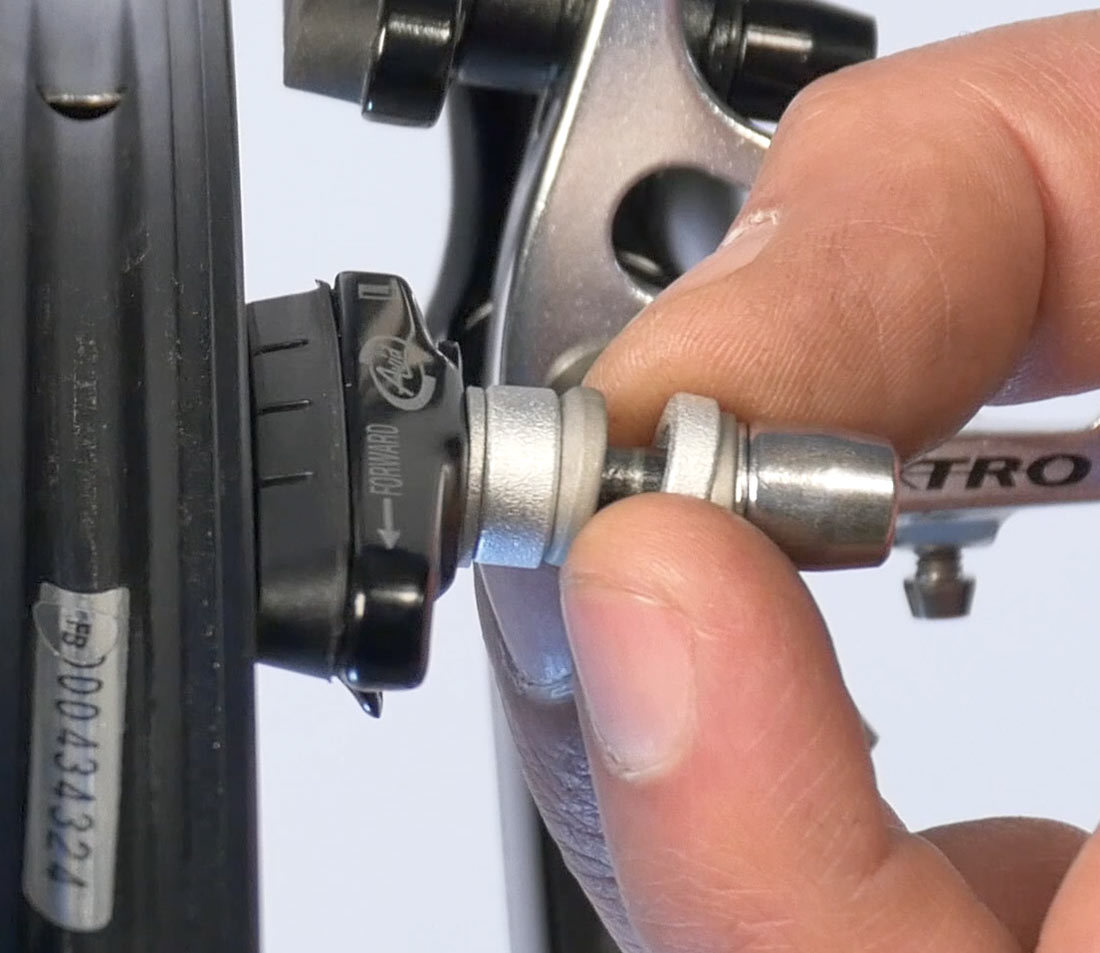
In the example below, the caliper on the left has the narrow spacer inboard to the rim. The caliper on the right has the wider spacer inboard. The angle of the caliper arms are different. The left caliper here in a better position, so the narrower spacer should go inboard.
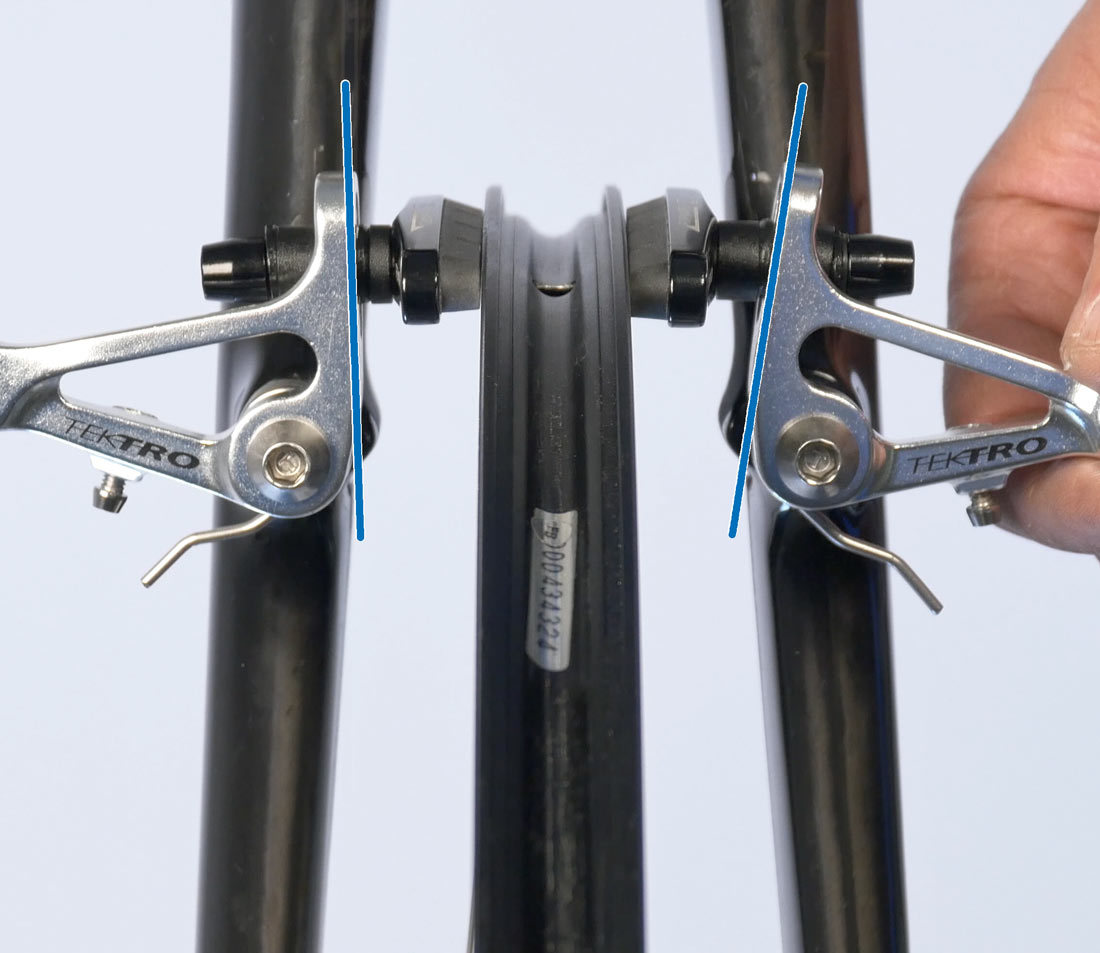
Remove the wheel just to get it out of the way, and begin by removing the mounting nut, spacers, and brake pad from the caliper arm.
Again, pay attention to the spacer orientation as they come off.
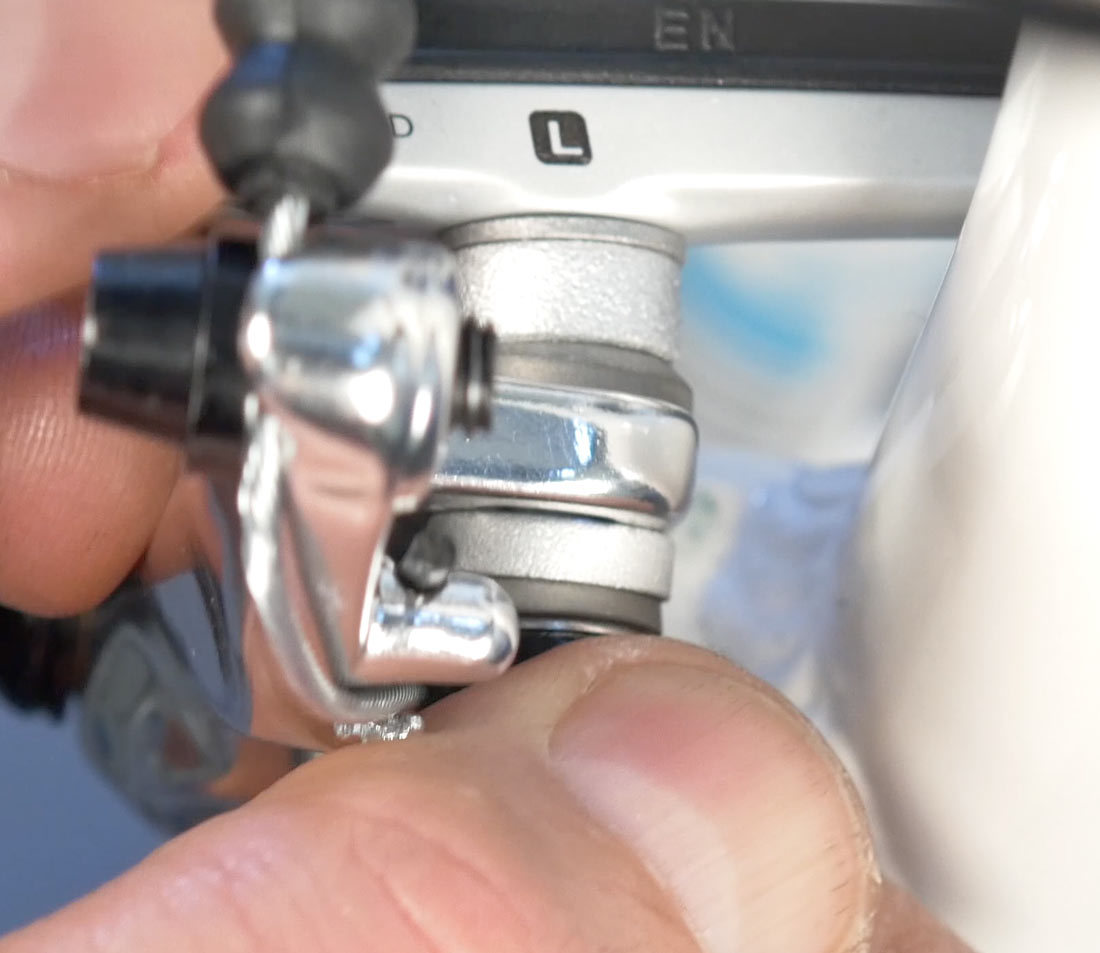
Inspect the new pads for any directional arrows, indicating on which side to install the new pad. If there is a closed side to the holder, and an open side, the closed side always goes to the front.
Install the new pad with attention to spacer orientation. Repeat the process on the second pad.
Cartridge Style Pad
When replacing only pad material on cartridge style pads, remove the retention screw or clip, and pull the pad backward to slide it out.
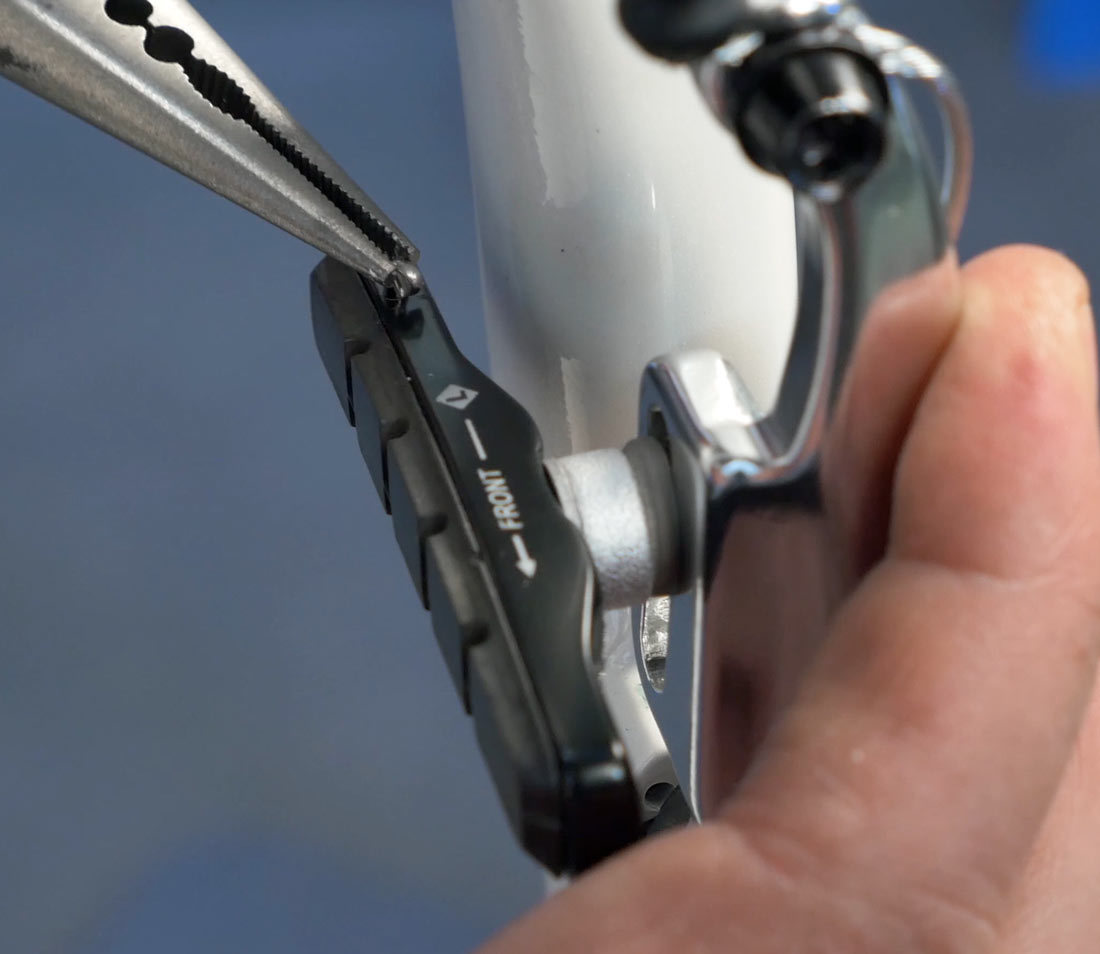
Inspect the new pads, and look for the curve of the pad. The curve should match the curve of the rim.
There will be a groove in the back of the pad to accept the retention clip. Push the pad fully into place and install the retention clip.
This concludes the process for replacing the pads with threaded studs, but you will need to make additional adjustments to make the brake function properly. See our article on brake pad adjustment.
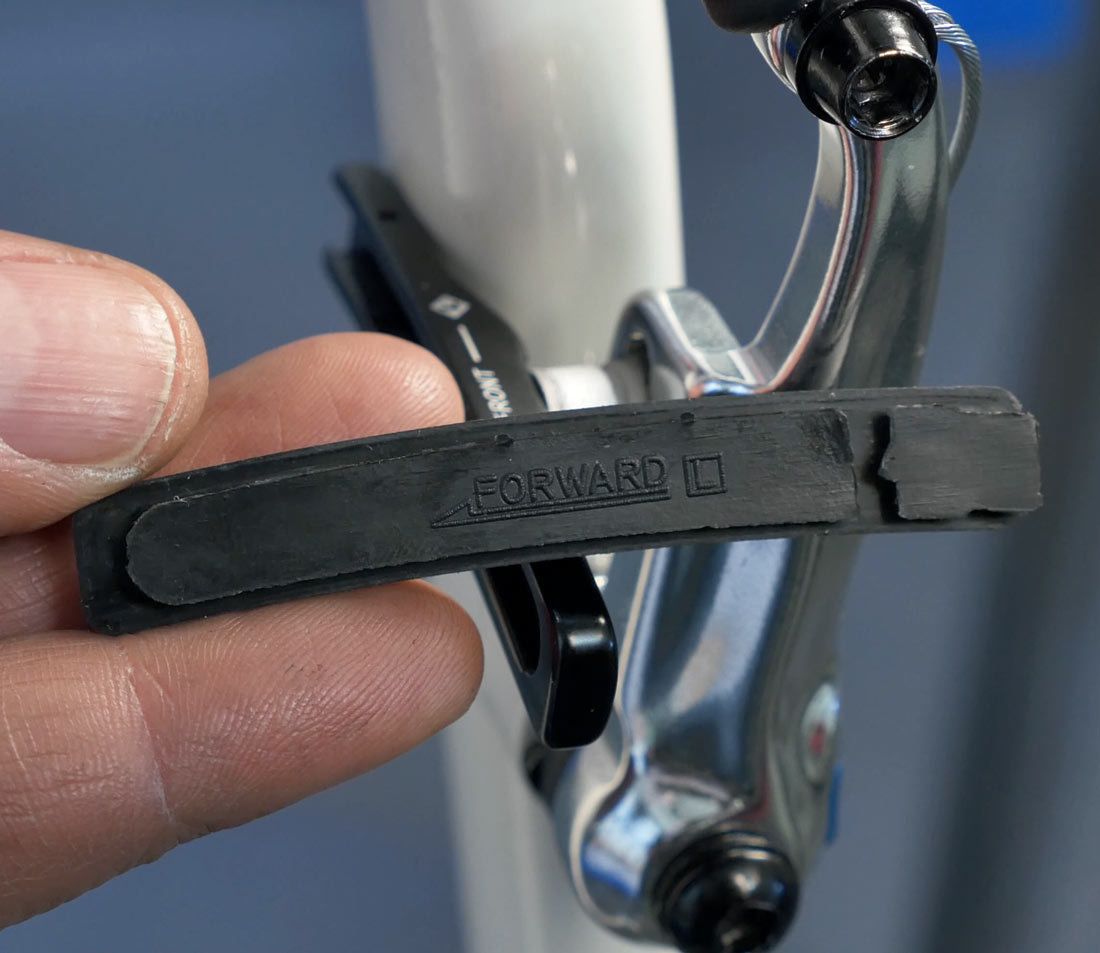
For brake and pad adjustment of the threaded stud pads see:
Smooth Stud Pad
Full Pad Unit
This process is often easier without the wheel. Inspect the caliper arm and pad stud, making note of spacer orientation. There are often convex and concave washer system build into the arm that permits pad alignment, and they will need to be reinstalled correctly.
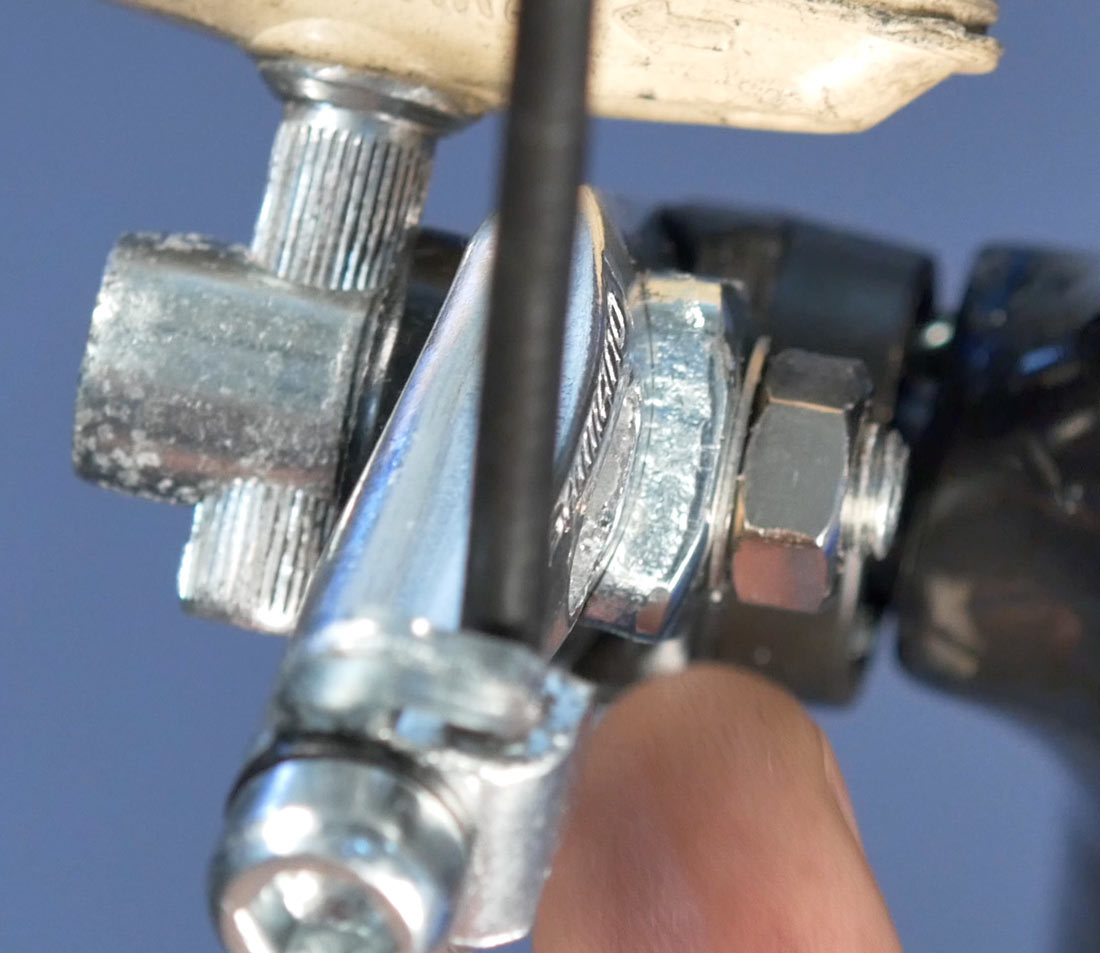
Using a hex wrench to hold the bolt head, loosen the mounting nut with a wrench to wiggle free the stud. Note any “forward” arrow indicating which side to install the new pad. If there is a closed side to the holder and an open side, the closed side always goes to the front.
Slide the new pad unit into place. Repeat the process on the second pad.
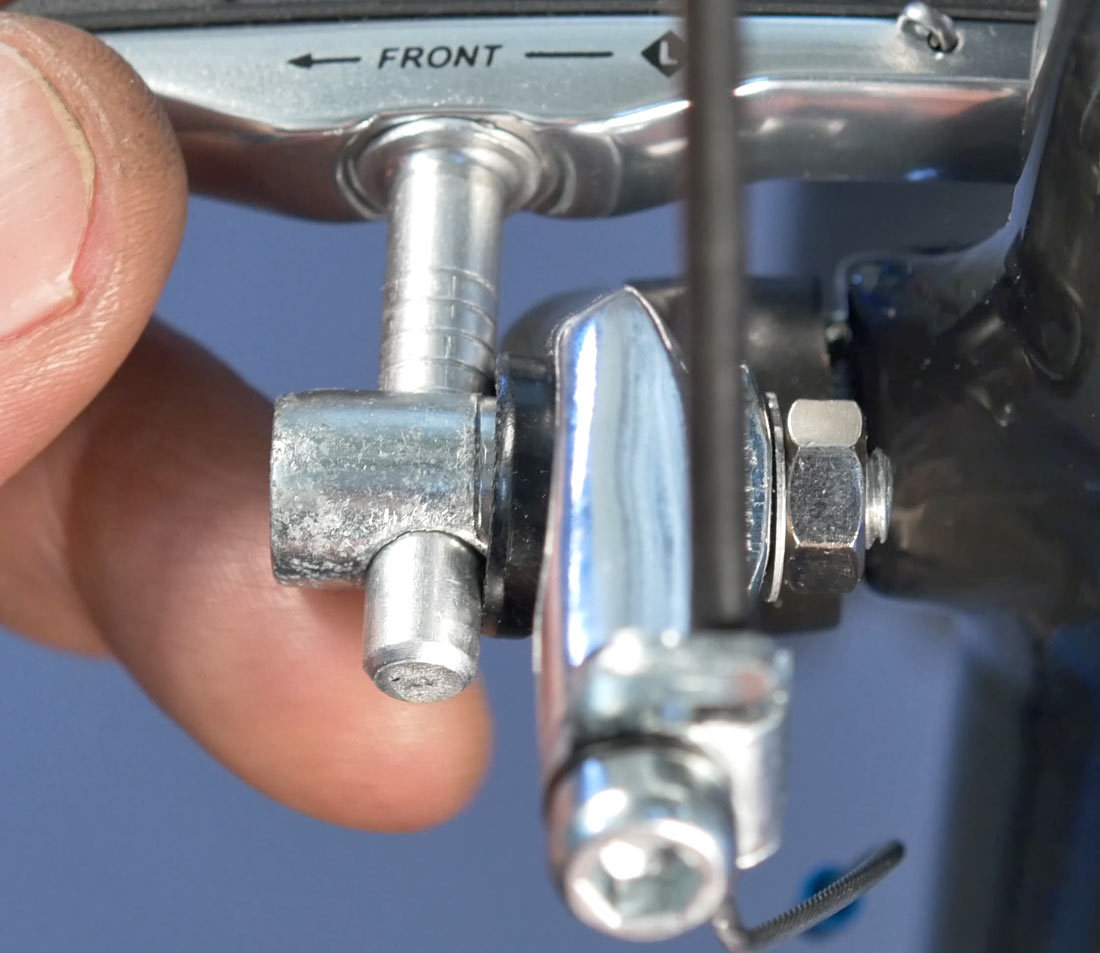
Cartridge Style Pad
To replace only the pad material with cartridge style pads, begin by looking for a retention clip or screw on the back of the pad and remove it. Pull the pad backward to slide it out of the cartridge holder.
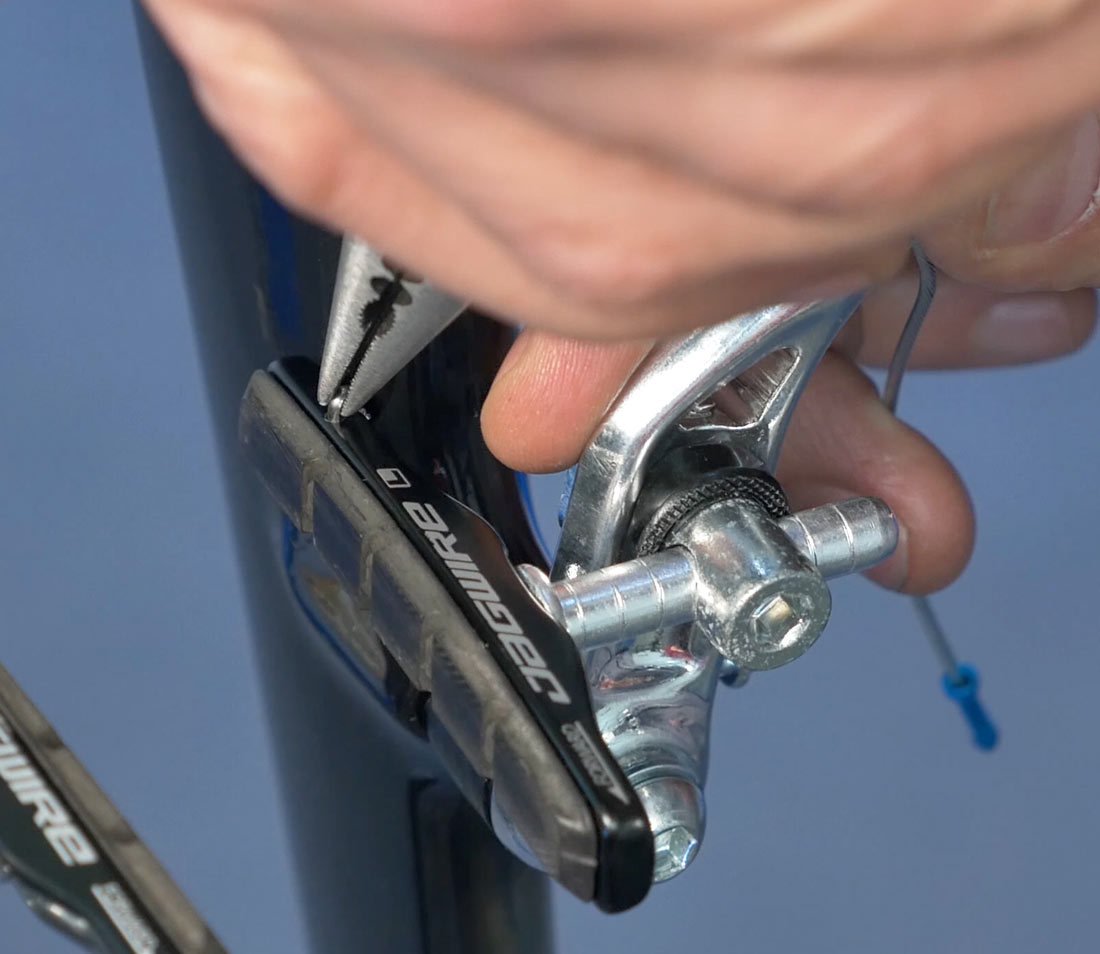
Inspect the new pads, and look for a groove in the back of the pad to accept the retention clip. Push the pad fully into place and install the clip.
This concludes the process for smooth stud pad replacement, but you will need to make additional adjustments to make the brake function properly. See our article on pad adjustment.
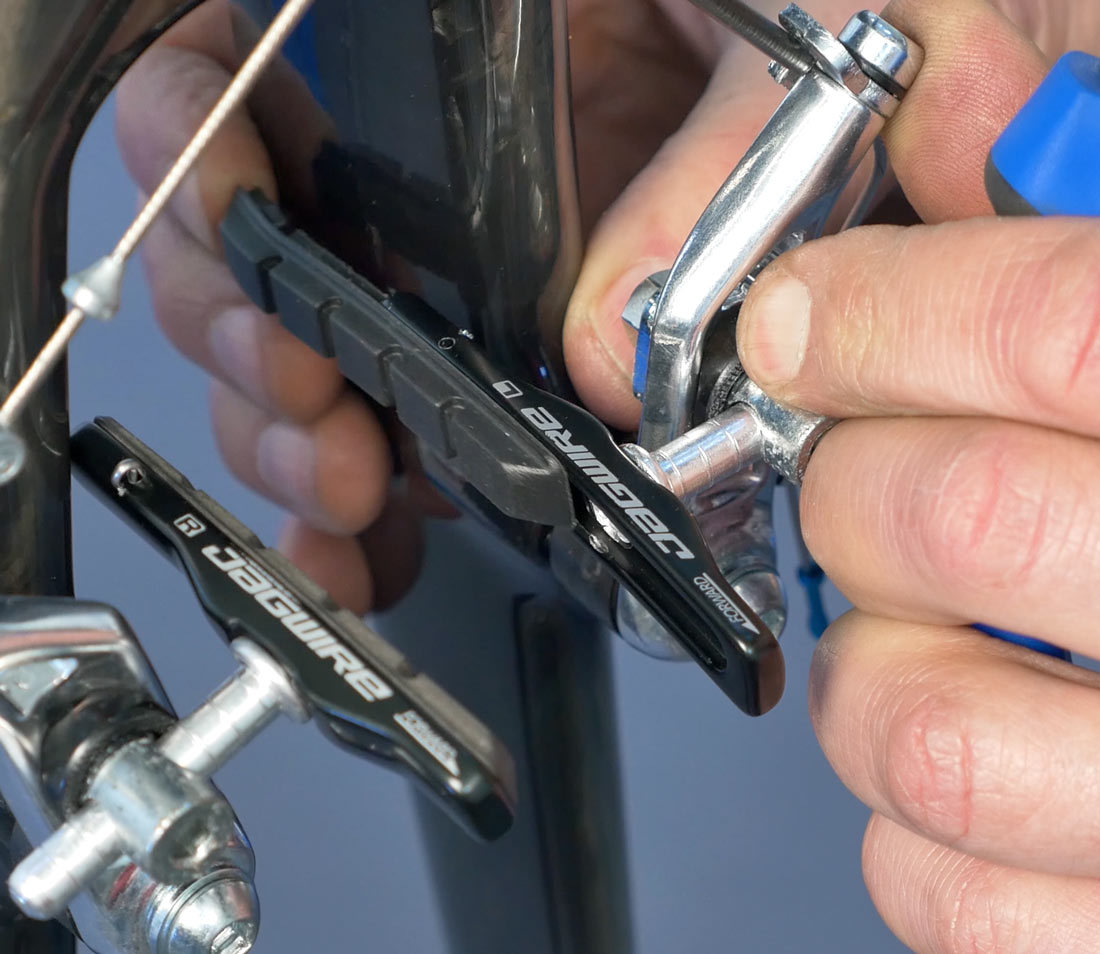
For brake and pad adjustment see: